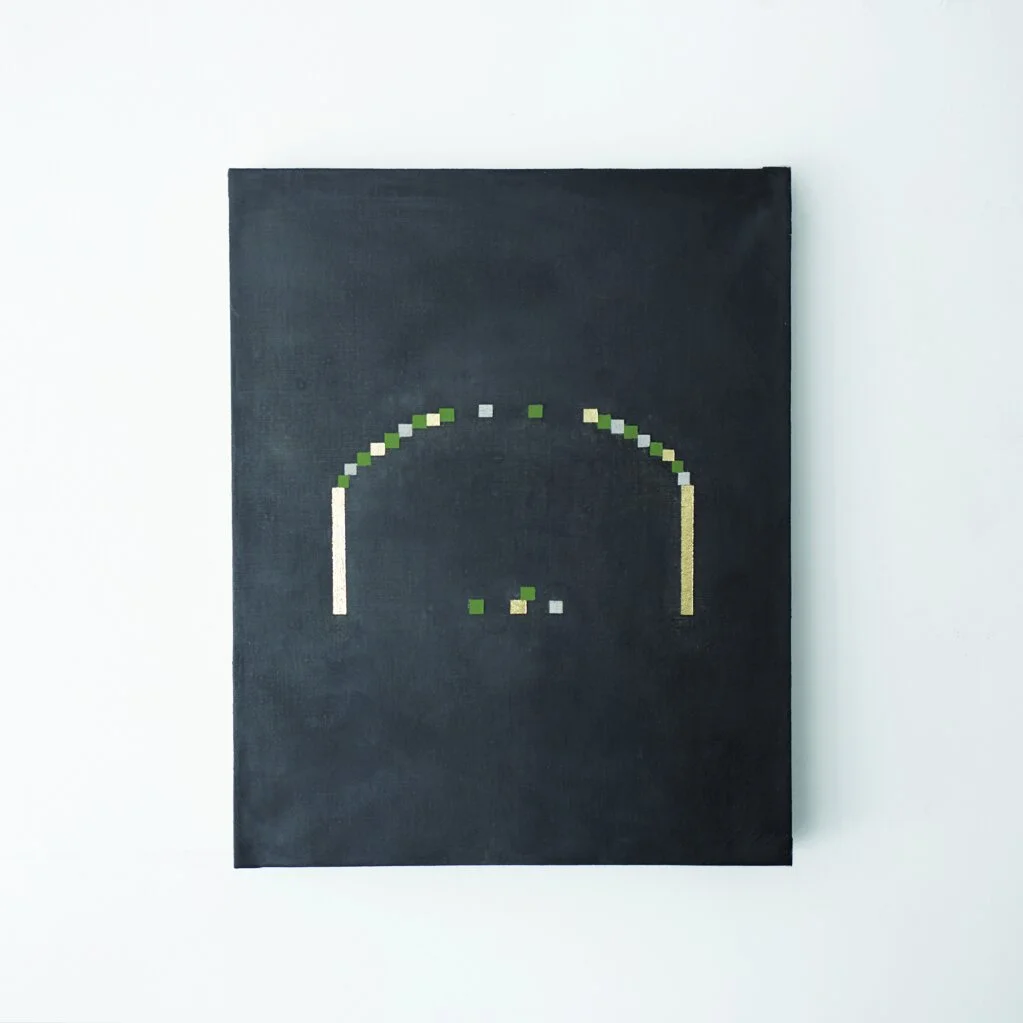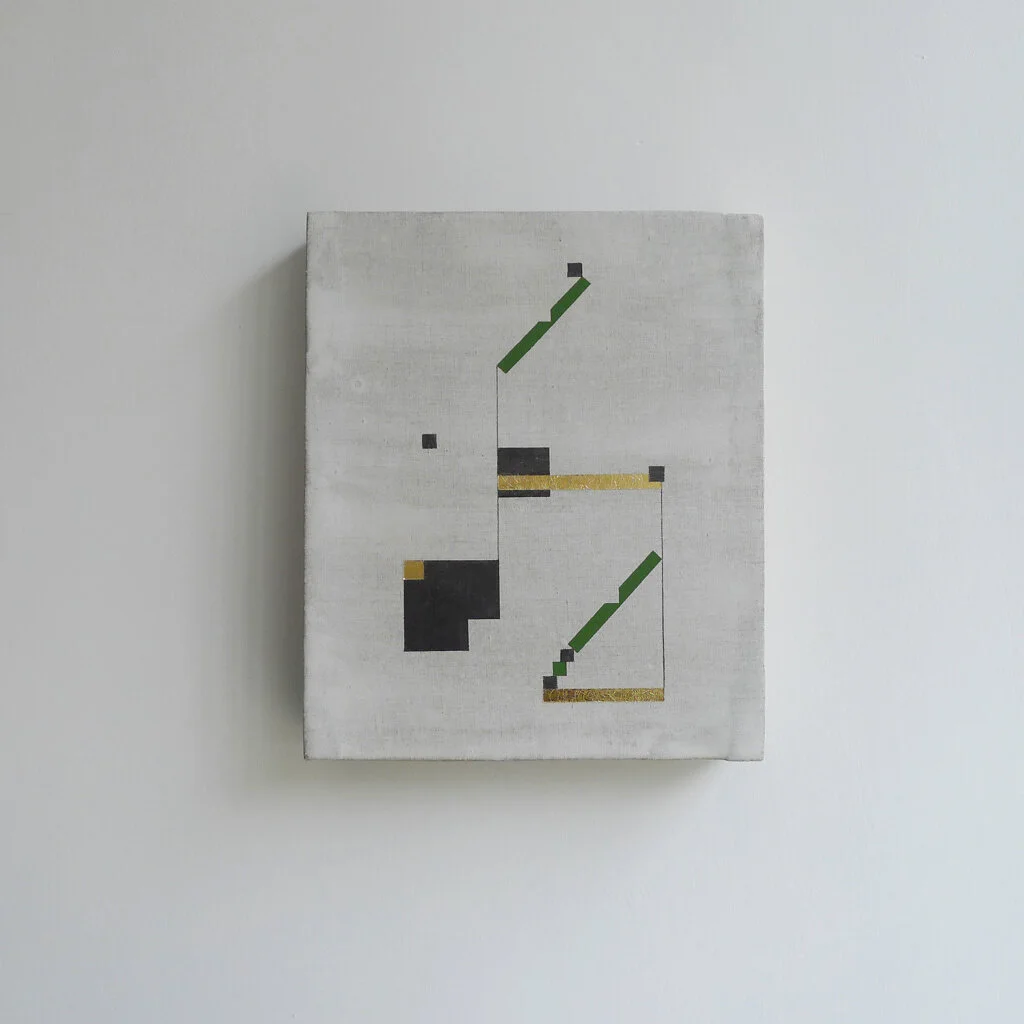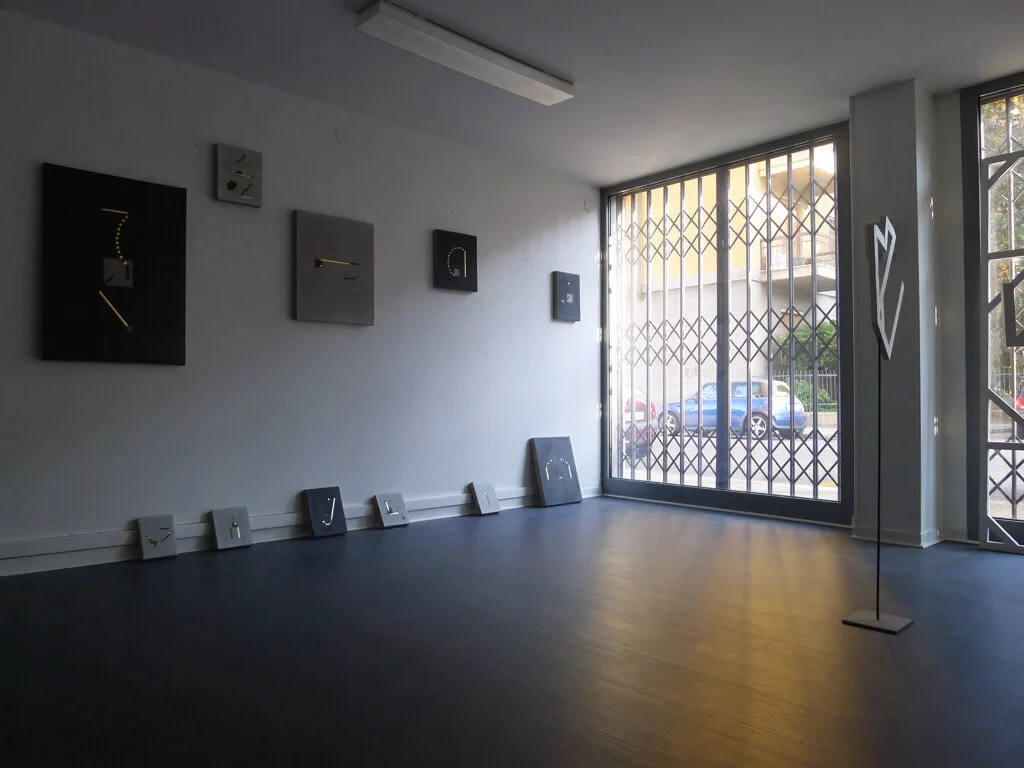Francesca Longhini
Hunted Projects: Can you tell me a little about yourself, your background, and when you first started working full-time as an artist?
Francesca Longhini: Well, I have never believed I could do anything else. I mean, I don’t think I am good at anything else. After school and after a short period, when I attended the Law School, I enrolled to the School of Fine Arts in Brescia.
Right now I don’t work full-time as an artist. I have another job at a print company. I am glad I can address my attention in two different directions, it allows me to make the most of the time I have without losing my mind over one activity.
Over the last couple of years some great opportunities showed up in the artistic field, they have been really decisive. For example, my solo show at the Ibid Gallery in Los Angeles gave me the opportunity to reach the American public.
HP: Can you tell me about your current studio and working routine? Do you have any morning rituals or habits that contribute towards a productive day within the studio?
FL: I find myself comfortable having a routine: I go to my studio every morning after coming back from my job. It doesn’t matter if I am going to continue or to start a new project; I just want to be present in the studio to enable things to happen.
My studio has two floors. On the first floor there is my lab, where I placed a sofa. As I reach the studio I sit on the sofa with a sketchbook of notes and I stay still. That’s when things start to happen.
HP: I am interested to know how you plan your works. Do you begin with preparatory sketches of some form, or do you prefer to work directly onto the canvas in an improvised manner?
FL: I do sketch improvisations in my sketchbook. The preparatory part is based on improvisation. Then I transfer the project onto canvas - it is mostly an execution of the project. Anyway, there may be unexpected events during the execution on canvas, which causes some modification of the initial project.
HP: I am also curious about the documentation of an artworks creation. Within my own studio I regularly take images of paintings in progress so I can note specific points in the works creation. How regularly do you document the progression of your works? Is it important for you to take note of a works evolution?
FL: No, it isn’t, since the project is the focal point. I can say that my sketches make up my archive.
HP: Directing ones interpretation of a painting is always tricky to control or navigate, for abstraction tends to have multiple entry points. Though, when I view your works, I feel directed to examine your surfaces as an abstracted investigation into the richness of baroque painting, but the stripes, points and lines can be interpreted an enquiry into architectural floor plans. Simultaneously I feel that your works could be viewed as a topological map of a nonexistent space, which encourages the viewer to question their own position within the context of the gallery and the painting itself.
When it comes to interpretation, how would you explain your work to someone who has never seen your paintings? I am also curious if there is a specific way you would like your works to be interpreted by the viewer?
FL: I like how you feel when you view my works.
My surfaces are actually both neutral and non-neutral. My works surfaces are never chromatically loud, no matter whether they’re black or white; nevertheless, I believe that surface plays a key role in my works structure, perception and overall meaning.
I perceive white surface as a cement, deaf and soundless base, which is strongly bound to the “NOW” moment. The black surface, by contrast, discloses a metaphysical pitch, which recalls me of the muffled depth of the sound of Time. They are both contexts. As you observed, my works can be maps of a non-existent space or, better said, of a mental space, in which and on which the same characters interact in different ways.
I might even define my works as Hogarth’s “genre scene” deprived of any satiric sense, or better, I might define them as abstract genre Scene. I do not really wish to guide or to train the interpretation of my works. What I really care about, by contrast, is that the viewer takes time to observe. In fact, I believe that my works disclose exclusively if the viewer takes the due time for the observation.
HP: Can you discuss the painting process and intricacies involved in the creation of your works?
FL: I personally take care of the entire canvas preparation process. First of all, I build the frame. Afterwards, I stick the linen sheet to the frame. Then comes a long preparation of the surface, which might take up to 12 different phases and quite a long period of time. I also need to pay attention to seasons, air temperature and humidity, since they are all influencing factors that can affect the final result. I use rabbit glue and gesso di Bologna as main ingredients.
When the canvas is ready, I arrange all the pieces in front of me and look at them while I hold my notes in my hands. That’s how I choose the most suitable support for each sketch.
Over the last few years I have been loyal to a narrow chromatic grammar: green, graphite black, a neutral colour, such as gesso. The goal of my choice is not to distract the viewer, but to enable him/her to concentrate on the sign, instead.
The gold foil took over when I realised that I needed light. I did not want to add a new colour, so I thought about adding a material that would reflect the environments light. I chose gold because of its dual nature, both spiritual and material. I see gold as representative of human nature.
HP: When viewing your works, it is noticeable that scale is consistent and evidently very important. There appears to be a focus on making solely small-scale intimate sized paintings that are object-like. Out of curiosity, what are the structural limitations that you like to work within? Is there a future interest to create large-scale paintings?
FL: It’s true, in my last series of works I have worked with small sizes, with quite fixed proportions. I enjoy the object-like and intimate dimension of my works. I believe it is suitable and tailor-made for what I treat.
Choosing a scale for me is like choosing a suitable register for a writer. As I use a visual means to show chewed over thoughts, I believe that the small/medium scale helps me to actualise, to make visible and nearly tangible something that would be hard to focus on otherwise. If we are close to the object we are looking at, our eyes can easily focus on it, if its dimensions are small. If the object dimensions are bigger, by contrast, some distance will help to get the whole picture and its details.
Right now, I am not so far from my works that I need to approach large-scale painting. I am sure the time for that challenge will come, as a result of a thought out choice.
HP: The title of your recent solo exhibition at IBID LA, interests me. Would you be able to discuss the title, Baroque Anxiety?
FL: I understand baroque as a state of mind, not only as a style, which is often confused and muddled. In “Baroque Anxiety” the subject is anxiety. Baroque and anxiety have some common features: horror vacui, crowding and hoarding elements, components, details which run out of control because of their enormous quantity.
The resulting confusion puts us in a sort of limbo, the space of paralysing fear, forks in the road, or converging railroad tracks that threaten derailment. These instances when choice and indecision intertwine, where anything is possible because the future has yet to come. This is what I showed at the Ibid Gallery: the suspended and uncertain balance which attempts to distribute weight, to arrange things, in order to escape submersion.
HP: Baroque Anxiety was a beautifully curated exhibition. I am curious to what extent you are interested in responding to a galleries environment when planning works for an exhibition? Is this important for you?
FL: The destination of my works is surely important, especially when the environment is hybrid or owns strongly peculiar or recognisable features. For instance, in 2014 my works were exposed at The Workbench in Milan, a space dedicated to art that is actually a former goldsmith lab.
The environment was really peculiar and I tried to fit into the context with respect and consideration. The content, form and craftsmanship of my works, by contrast, are not deeply influenced by their destination.
HP: I am interested in the notion of preciousness and at what stage a painting becomes discarded in the studio. Do you have a tendency to destroy failed paintings? Or, do you aim to be as efficient as possible when planning a work so to avoid destroying anything?
FL: I try to be as efficient as I can, but sometimes I obviously notice that my idea doesn’t work as I thought, once it has been transposed onto canvas. When it happens, I store the unsuccessful works without destroying them, so that I will not forget my mistakes.
HP: Focusing on the titles of your paintings, I am interested in how you choose such titles: ‘Exhausted Sentence,’ 2017, ‘Compromise Lives On Preclusion’ 2017 and ‘Time Is The Shadow Of The Light’ 2017. For you, what is the role of an artworks title? Also, do you wish for your titles to directly relate to the painting, or do you aim for the title to offer an alternative interpretation of the work?
FL: Titles are a fundamental part of my works. Most times they were born together with the project of the artwork. I firmly believe in balance among forms, in balance among words and in balance between forms and words. If I try to think about something similar, poetry comes to my mind. Often the titles in poetry give possible interpretative directions, which every different human being perceives in his or her own way. I do not intend titles as cages for meaning, but as input instruments that start an inner process in the viewer’s mind.
HP: What projects and works are currently in progress in your studio? Are you preparing for any specific future shows?
FL: Now I am preparing for the art fair Artissima 2017 in Turin, Italy (November 3rd to 5th). I am going to participate with a solo project for the Loom Gallery (Milan, Italy).
HP: To what extent do you consider Brescia as being an influential factor in the shaping of your work? Do you feel that your surroundings have influenced you in one way or another?
FL: The surroundings do influence us, but as we are receptive beings we are also influenced by experiences, travels, what we see, what we read and what we rediscover. After all, the Gestalt psychology claims, "the whole is greater than the sum of its parts".
HP: In relation to social media and more specifically Instagram, what are your thoughts on this as a platform to engage with new audiences? Do you have a love or hate relationship with Instagram and other online social media platforms?
FL: I believe that Instagram is an excellent platform. First of all, Instagram increases one’s visual culture. I can say that I have a good relationship with the social media platforms.
HP: Do you consider Instagram important for artists working today? From your perspective, what are the Pro’s and Con’s of Instagram?
FL: I believe that Instagram is important for artists working today. Not only does Instagram increase one’s visual culture, it also becomes a showcase for the artist. I must say that a good showcase surely might be enough to catch one’s attention, but people are conquered by quality, not just by the appearance. So, the live quality of one’s work remains essential, regardless of the showcase.
HP: Do you have any dream projects in mind that you would like to do in the future?
FL: In the future, I would like to keep my coherence, not giving up experimentation.
HP: Generally, can you tell me your views on painting today?
FL: I believe that painting is a long journey, a marathon including the baton passage. There happens to be a runner who inverts the direction of the run to go back where others used to run in the past. Going back to paved ways might not be wrong, sometimes, if it is done in one’s own way. After all, all the runners run on an oval course, no matter which one direction they may run.
HP: Can you highlight some of your influences and discuss how your influences have made an impact on you and your practice?
FL: Agnes Martin, Mark Rothko, Martin Puryear, Jenny Holzer, Rachel Whiteread, Felix Gonzales Torres, Annie Fleischmann Albers, Piet Mondrian, Marjorie Jewel A.K.A. Marlos Moss, Alberto Giacometti, Paolo Icaro, Caravaggio, Patrizia Cavalli (poetry) and Sarah Kane (poetry). Just to list some of them.
They are very different one from each other. What I am attracted by is how they show silence, each of them in his/her own way and each of them with his/her own sensitivity. The silence dominates, annihilates or gently makes you crystallise.
They make me crystallise.
What I love in their work is silence, facts and stasis in the flow of time. I believe that’s what their influence on me is about.
HP: Any last points or thoughts you would like to share?
FL: Thank you for making me speak. I am usually not so loquacious.




